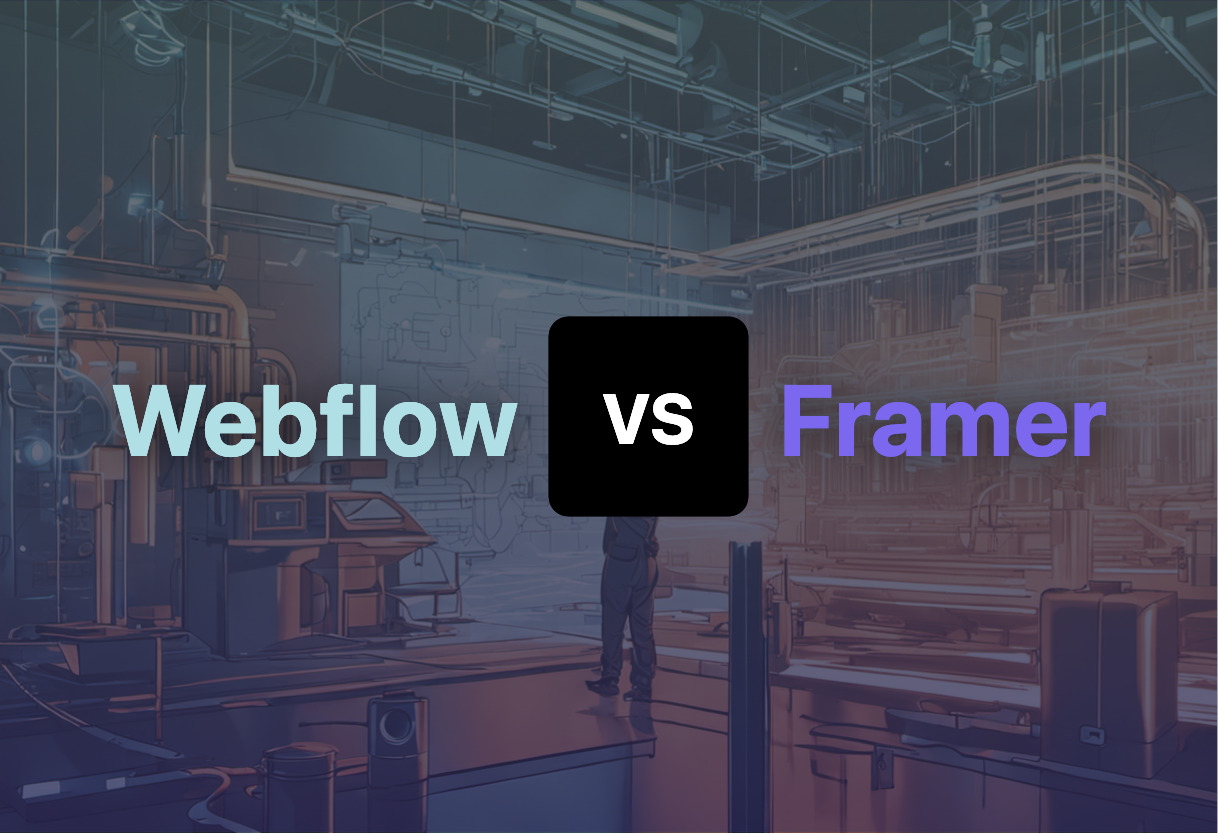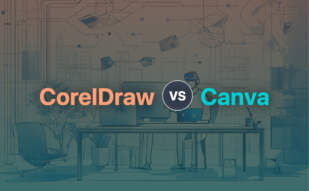For a design-controlled, eCommerce-enabled website creation, Webflow is the superior solution. It’s tailored for businesses selling various types of products. In contrast, Framer, with its AI-assisted and real-time collaborative design environment, is better suited for freelancers and corporations needing responsive web design, where eCommerce isn’t a necessity.

Distinctive Attributes Between Webflow and Framer
- Design & Customization: Webflow offers comprehensive design capabilities, whereas Framer focuses on streamlined, collaborative design.
- Ecommerce: Webflow supports end-to-end eCommerce, while Framer currently lacks native eCommerce features.
- Target Audience: Webflow caters to web designers, content creators, and eCommerce businesses, Framer targets startups, freelancers, and larger corporations.
- Pricing: Webflow pricing starts at $29/month whereas Framer offers a wider range, starting at $5/month for limited features.
| Comparison | Webflow eCommerce | Framer |
|---|---|---|
| Platform Purpose | Ecommerce platform without coding | Web design platform without coding for responsive websites |
| Pricing | Starting at $29/mo | Mini Plan $5/month, Basic Plan $15/month, Pro Plan $25/month, team and business pricing |
| Special Features | Customization for end-to-end customer experiences and design control | AI-generated Design, Figma plugin integration, limited CMS |
| Integration | Google Analytics, native interfaces, Zapier apps, Facebook, Instagram Shop | Plugins, Figma plugin, Design Components Marketplace |
| Ecommerce Features | Yes | None, but potential future integration |
| Customizable Domain | Yes | At Additional Cost |
| Secured Hosting | Yes on SSL domain | Optimized speed sites |
| Interactions & Animations | Yes | Yes |
| Learning Curve | Webflow University for learning | Some learning expected for new users |
What Is Webflow and Who’s It For?
Webflow is a leading eCommerce platform designed for building websites without the need for coding. It offers customization that disrupts traditional eCommerce, paving the way for end-to-end customer experiences tailored and controlled by you. Ideal for diverse products including physical goods, digital offerings and services, it’s a portal robust with features for any designer or retailer. This platform is for the web designers, web agencies, content creators and businesses who seize the steering wheel towards an enhanced online presence.

Pros of Webflow
- Ground-breaking design capabilities
- Variety of payment options supported
- Inventory sync and automated extensions
- Easily integrated with Google Analytics
- Full customized SEO control
- A multitude of integration possibilities
Cons of Webflow
- Requires a learning curve
- Transaction fees through Stripe
- Pricing may be high for single user
What Is Framer and Who’s It For?
Framer is an AI-driven web design platform empowering non-coders to build responsive websites with a drag-and-drop interface. It’s a functional juggernaut, optimized for startups, freelancers, and large corporations alike. Offering superior SEO optimization, smooth site management, useful plugins, and seamless integration with design tools like Figma, Framer is a go-to tool for anyone looking to craft winning web designs without extensive coding knowledge.

Pros of Framer
- User-friendly interface
- Superior integration with design tools
- Comprehensive animation and interaction libraries
- Pricing starts at accessible levels
- Enables real-time collaborations and design handoff process
Cons of Framer
- Presence of a learning curve for new users
- Limited features in free plan
- No native e-commerce features
Webflow vs Framer: Pricing
Webflow, beginning at $29 a month, presents itself as a comprehensive eCommerce solution, while Framer offers various plans starting from $5 a month, tailored for diverse user needs without native eCommerce functionalities.
Webflow
Webflow begins its pricing at $29/mo when billed annually. Offering itself as an eCommerce platform, it provides an array of features including customizable product fields, cart, and checkout experiences, secured hosting on SSL domain, and automated shipping processes. Webflow supports payment processing via Stripe, PayPal, Apple Pay, and Google Pay, and also includes discounts and coupons. Unique selling points include SEO control, and the ability to sync inventory with Google.
Framer
Framer offers various pricing plans: a Mini Plan at $5/month, Basic Plan at $15/month, and a Pro Plan at $25/month. Also available are team pricing, custom Business plan, and a free plan with limited features. Hosting a suite of functionalities, including SEO optimization, site management, plugins, and .Figma plugin integration, Framer appeals to a range of users. Its shortfall presents in its lack of native eCommerce functionalities and the added cost for custom domains.
Your High-Stake Decision: Webflow or Framer?
In the head-to-head bout of Webflow vs. Framer, your optimal choice pivots on your usage, goals and preferences.
Proprietors of E-Stores
Prefer Webflow for your e-commerce expectations. Its absolute control of customer experience,an array of practical integrations – from inventory alerts via Zapier apps to analytics through Google, and the trifecta of payment processing diversity deliver on your digital sale manager potential. Minimal transactional fees with secure hosting come as a feather in the cap.

Content Creators and Web Designers
Webflow engineers itself for your convenience. Its no-coding-required CMS, expansive template catalogue, and SEO controls render it a fertile ground for your online blooms. Plus, with Webflow University, you’re never adrift. Seamlessly ship your creativity anywhere in the world.

Collaborative Teams
Framer stands uncontested for collaboration champions. In the battle of design handoff tasks, it enables real-time collaboration and offers pre-made design components. Moreover, it fosters designer-developer communications, easing the ordeal of translating design goals into code.

Non-Coders
Framer leads for non-coders. Its drag-and-drop AI-generated design process has your back, while the downsides – limited built-in e-commerce functionality and a slight learning curve, are outweighed by its future prospects of acknowledging these gaps.
Framer and Webflow – both unique. Webflow, honed for e-commerce, delivery on design-led brand functionality, and SEO boosters. However, Framer rules for real-time collaboration, design handoff needs and non-coders. Your requirements, your verdict.
Patrick Daugherty
Content writer @ Aircada. Merging AR expertise with a love for late-night gaming sessions.





